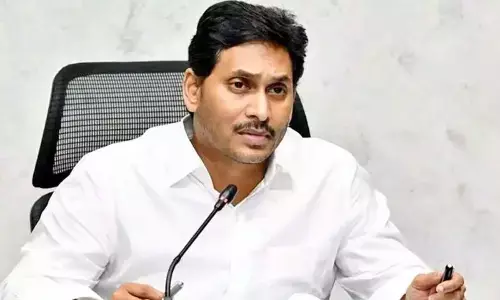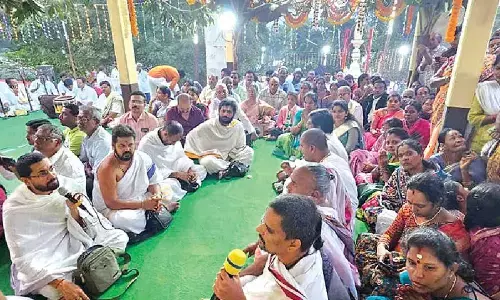Get Set Go, Hyderabad- Why people run Marathons?

The first major running event was held in 2004, the Standard Chartered Mumbai Marathon, Pune led way back in 1983.
Where it all began
The first major running event was held in 2004, the Standard Chartered Mumbai Marathon, Pune led way back in 1983. In 2015 we have nearly 150 running events across the country. India currently boasts of at least six world-class marathons held in the cities of Delhi, Mumbai, Chennai, Kolkata, Bangalore, and Hyderabad, with the SCMM, Airtel Hyderabad Marathon, TCS 10K Run Bangalore and Airtel Delhi Half Marathon is the bigger name. In 2009, the Delhi Half Marathon attracted 29,000 runners and in 2014 the number rose to around 32,500. The other events across India have seen a similar increase in participation each year.
While city marathons continue to grow, another breed of running events have begun to emerge in the country and runners seem to be lapping up all the action. Players like Runners for Life, Globeracers have revamped the running scene in India with offbeat events. Today, the calendar for running, events include the Run of Kutch, Himalayan Crossing, Mizoram Ultra, Nilgiris 100, Kaveri Trail Marathon, Satara Marathon, La Ultra- The High (Ladakh) etc. and young adventure and fitness enthusiasts from various cities have been jumping at the opportunity to run on difficult terrains with scenic beauty.
Legend has it that a Greek soldier, Pheidippides, ran from the plains of Marathon to Athens to announce that the Greeks had defeated the Persians in 490 BC. He ran 42.2km, which became the official distance of a "marathon".
Anil Singh is the founder and managing director of Procam International Pvt. Ltd, the promoter of the Mumbai Marathon. He's built like a rugby player, which he is, and is not used to taking no for an answer. As a spectator of the London Marathon in 2003, he had an epiphany. He saw 40,000 people of all shapes and sizes participate in the race and vowed to bring the same experience to India. He told me that "until the end of 2003, there was only one non-timed distance running event. Today, there are over 1 million registered runners for over 1,400 timed events in India, and it's a $400-million industry". Another benevolent spin-off is ₹400 crores raised for more than 600 non-governmental organizations by the four flagship running events of Procam International alone.
Why people run marathons
I am reminded of the classic answer George Mallory gave when asked why he was so keen on climbing Mount Everest — "Because it's there." The answer makes no sense to most people, but to anyone who has ever tried to run a marathon, it's extremely easy to understand.
Rashesh Shah, chairman, and chief executive officer of Edelweiss, has been running marathons for 10 years now. You would imagine that the head of a large finance company would be swimming with numbers, 24x7. However, before the sun rises the only number he's thinking of is 5.38 minutes, which is the pace he needs to maintain to finish a half marathon in under two hours. Rashesh said one of the reasons he runs is, "the social aspect. You meet people outside your business circles, from all walks of life. Running also allows me to fit exercise in my travel schedule. When you run in the early hours of the morning, you get to see a city in a different light".
The popularity of running has grown in all segments over the last decade, but its increase in the corporate segment has been exponential. Today, at the start line of most marathons, you will find a disproportionate number of CXOs belonging to most of the big corporates across the country.
Is running an expensive hobby?
All you need to run is a pair of shoes right? Is running an expensive hobby? Like most things in life, the answer is it depends. It's like going out for dinner you have a whole range from a 50 Rs fast food meal to a 1000 Rs meal at a fancy restaurant. For the most basic running, you need a pair of shoes, shorts, and a shirt. But the way one thinks is if you throw money at something, you can automatically do it better. Buy a better racquet, get better at tennis. Buy better shoes and run faster. We are suckers for whatever the shoe companies tell us. And you can indulge in buying gadgets and accessories, or do it with the bare minimum basics.
Of course, exercise is well known to be beneficial for health and it stands to reason that the more you do, the greater the benefits. That's true, up to a limit. Research has shown that, beyond a point, you reach a plateau and there is no further health benefit. This plateau is seen anywhere between 2,000-3,500 calories expenditure per week in physical activity, which roughly translates to 30-50km of walking or running per week.
In fact, some studies have even shown some possible harm in "over-exercising". Let me hasten to add that this whole idea of excessive exercise being bad for you is a very new concept, with minimal data available at present. In any case, excessive in these cases are usually folks who engage in ultra-marathon training, and year after year are running in excess of 100km per week. In general, these athletes are extremely healthy, but questions are being raised on the cardiac effects of such high volumes of training. In other words, there are certainly huge health benefits in running, but there may be no "added" benefits in running very long distances.
For running theoretically, there's no need for expensive memberships or equipment. But now groups of runners have begun networking on forums , forming their own running groups in cities such as Bengaluru, Chennai, Chandigarh etc. The idea is to exchange stories with other runners, discuss different terrains and techniques of running.
So costs associated with running are:
Shoes
Socks
T Shirt
Shorts/Pants
Watch basic or the GPS enabled one like Gramin.
Water bottle
Hat
Sunglasses , Sun Block
Gels and Ointments depends on how much you run and need
Music
Extra Food to meet all that extra nutritional demands
Race Entry Fees
Souvenir race shirt
Commercial Interest in Running in India
The running phenomenon that started has grown into a movement that has spread. There are many reasons, increasing urbanization, more awareness about health and fitness and the means to pursue those goals, an increasingly sedentary lifestyle and the efforts to counter that, and just a general momentum. The more races are organized, the more people get interested in running them.
The great equalizer
One of the unique features of the marathon is that it is the only sporting event in the world where one can run with the world's best in the same race. It gives marathoners cold comfort to know that when they are struggling on the road, so are the elites, except at a different pace. Over the years, the number of women taking up running has increased greatly, and in marathons in India today, approximately a third of the runners are women.
One of the benefits of running as an exercise is that it allows you to achieve a high level of fitness while putting in fewer hours per week compared to lower-intensity activities
Safety concerns
Dr. Rakesh Sinha was a famous laparoscopic surgeon and gynaecologist in Mumbai who regularly ran the marathon. In December 2016, he collapsed on a training run, and sadly passed away, due to a cardiac arrest. Every time, there is an incident like this, it causes great concern among the family members of runners.
In 2012, a study was published in the New England Journal of Medicine, titled Cardiac Arrest during Long-Distance Running Races. This looked at the incidence of cardiac arrests in the marathon and half-marathon races in the US from 2000 to 2010 and included 10.9 million runners. In that entire period, there were 59 sudden cardiac arrests, of which 42 were fatal. While statistically, these numbers are extremely small, each death is devastating to the family. To reduce this risk one needs to take care of pre-participation health check, paying heed to warning signs while running, and appropriate medical facilities available during races.
India has undergone an epidemiological transition a decade ago, and now chronic diseases such as heart disease, stroke, diabetes and cancer are the leading cause of death, as opposed to infections in the past. Most of these conditions have physical inactivity as one of the major risk factors. Hopefully, as more people get "infected" by the running bug, we will see an improvement in long-term health and a decline in these health conditions.
How you should get started
For most people, the thought of running even one kilometre (km) is daunting, let alone a marathon. The good news is that the first step to any successful running program is walking.
Begin by walking for 30 minutes. Gradually increase the pace and time until you are able to cover a distance of 5 to 6km in an hour. Keep doing this until it feels easy.
When you are comfortable walking briskly and want to step up the pace, simply adds in a few short runs into your 60-minute walk.
As you get more accustomed to running, increase the running segments gradually. Eventually, you should be able to run for 40 minutes continuously.
Today, running groups are mushrooming all over the country. The largest group, Striders, now trains over 5,000 runners spread out over 13 cities across the country.

















